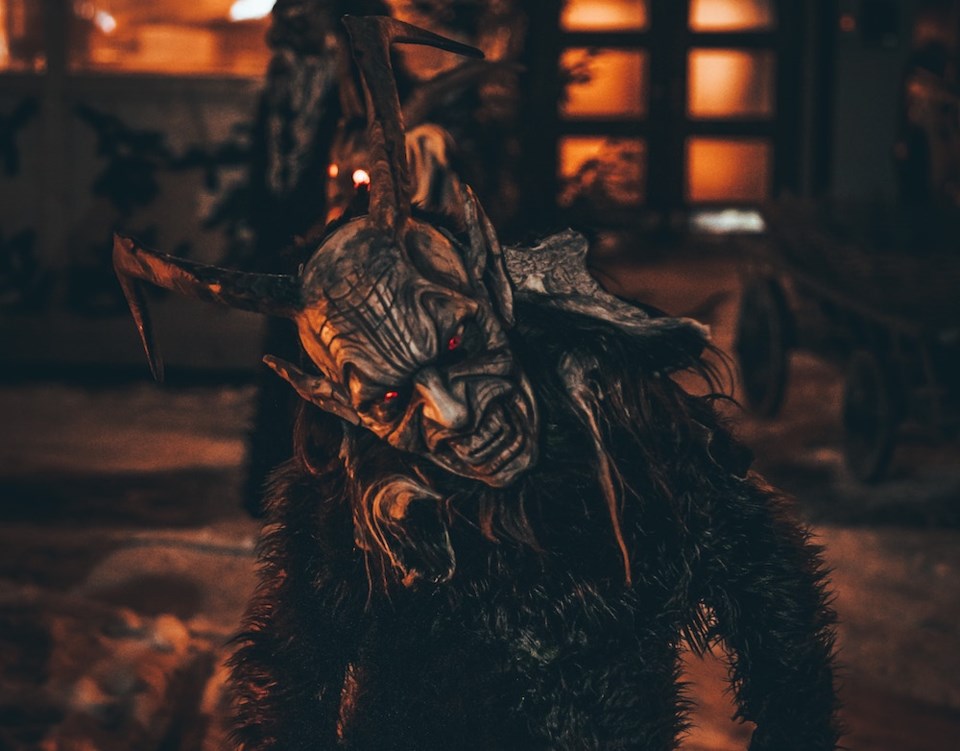In the realm of holiday folklore, nestled between the sugarplum fairies and the benevolent Santa Claus, exists a darker, more enigmatic figure – Krampus. Originating from Alpine folklore, Krampus has transcended its regional roots to become an intriguing and somewhat ominous character in North American pop culture. This horned, cloven-hoofed companion of Saint Nicholas has a history that dates back centuries, and its journey from local legend to international notoriety is a fascinating tale.
Krampus, whose name is derived from the Old High German word "Krampen," meaning claw, is a mythical creature that accompanies Saint Nicholas during the Christmas season. Rooted in Germanic folklore, particularly in Alpine regions like Austria, Germany, and Switzerland, Krampus is said to be a demonic creature who punishes misbehaving children, while Saint Nicholas rewards the well-behaved with gifts.
Described as a hairy, horned creature with cloven hooves, Krampus wields chains and a bundle of birch sticks. Legend has it that he would swat naughty children with the sticks and sometimes even carry them away in his sack to the underworld.
Krampusnacht, or Krampus Night, traditionally takes place on December 5th, the night before the feast of Saint Nicholas. During this night, people dress up as Krampus and roam the streets, participating in parades and festivities that celebrate the dual nature of the holiday season.
The concept of Krampus remained relatively confined to Alpine regions for centuries, with communities passing down the tradition through oral storytelling and local celebrations. However, the late 19th and early 20th centuries saw the rise of interest in folk traditions and a resurgence of interest in Krampus.
In recent years, the globalization of culture and the internet have played pivotal roles in introducing Krampus to a broader audience. Social media, in particular, has been a catalyst for the spread of Krampus-related content, with enthusiasts sharing images, stories, and experiences, helping to elevate Krampus from a regional curiosity to a global phenomenon.
The influence of Krampus on North American pop culture can be traced back to the early 2000s when interest in the darker side of holiday traditions began to rise. Books, movies, and television shows began incorporating Krampus into their narratives, adding a macabre touch to the festive season.
Movies like "Krampus" (2015) and various Krampus-themed horror films have contributed to the creature's popularity in North America. Additionally, Krampus has become a staple in holiday-themed events and parades across the continent, with communities embracing the darker side of Christmas in a playful and entertaining manner.
From its humble origins in Alpine folklore to its emergence as a globally recognized figure, Krampus has undergone a remarkable transformation. The creature's journey into North American pop culture showcases the dynamic nature of folklore and the ability of traditions to transcend borders in our interconnected world. As Krampus continues to make its presence felt in holiday celebrations, it serves as a reminder that the yuletide season is not only about joy and generosity but also about the rich tapestry of cultural stories that make this time of year truly magical.




